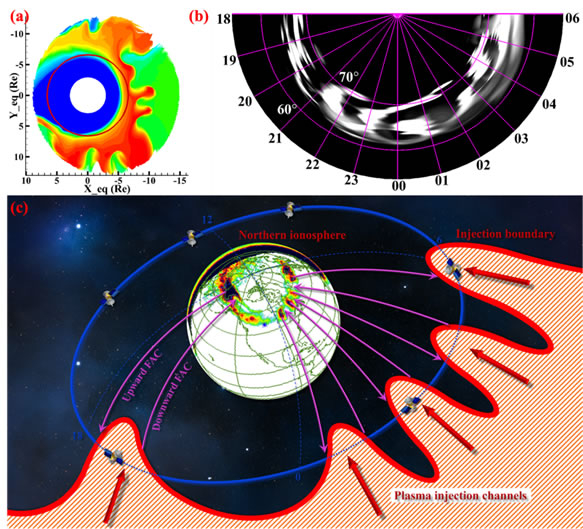Development of Multiple Injection Channels during a Sawtooth Substorm Event
Substorm injection boundary was proposed to explain the dispersion characteristics of particles during the substorm expansion phase. Sawtooth event, a peculiar quasi-periodic type of substorms, is believed to have a very wide injection boundary around geosynchronous orbit. In this study, we combine the numerical simulation of the Rice Convection Model with the IMAGE, LANL, and GOES data to investigate how the injection develops and couples with the ionosphere during a sawtooth substorm. We find the wide injection breaks up into multiple injection boundaries/channels with the local time separation of about 1~2 h. Using backward tracing of energetic particles in the self-consistently computed electromagnetic field, we can infer the MLT locations of the channels, which are found to nearly one-to-one co-located with multiple finger-like auroral structures. Our study provides strong evidence that the interchange instability plays a central role in the development of multiple injection channels.

Accepted by Geophysical Research Letters at 17 JUN 2021. First author: Weiqin Sun, PhD student from Sun Yat-sen University; corresponding author: Jian Yang, associated professor from Southern University of Science and Technology.

